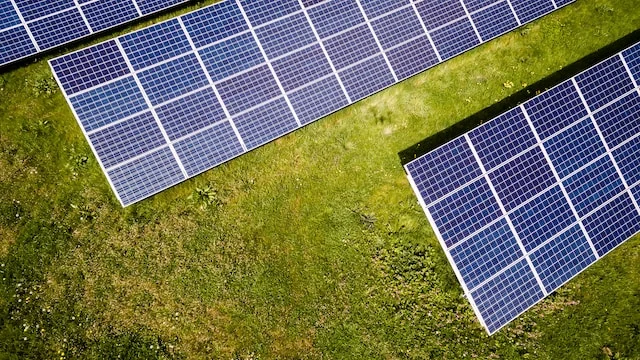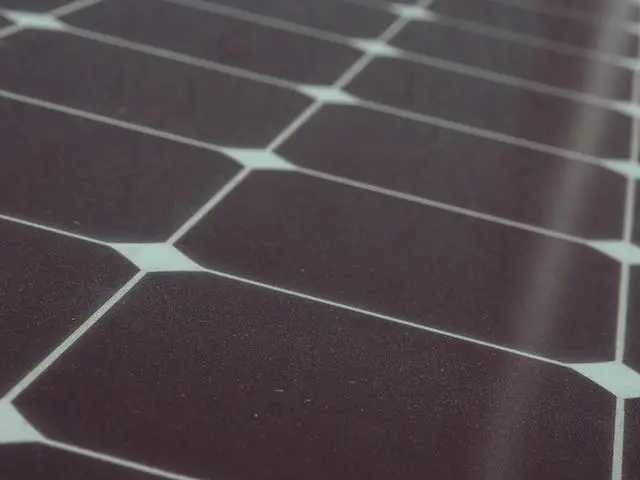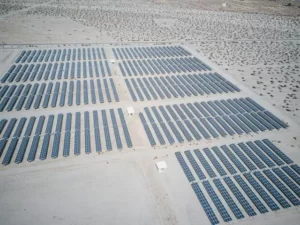You might not be aware that solar irradiance is not a constant value; it fluctuates based on numerous atmospheric conditions, time of day, and geographic location. To accurately measure this dynamic quantity, you’ll need to employ a device known as a pyranometer—a tool that might sound complex but is essential for gauging the power of solar radiation hitting a given area.
As you embark on this intricate task, you’ll discover that selecting the perfect site for measurement is just as crucial as the instrument itself. Ensuring your pyranometer is free from shade, away from reflective surfaces, and correctly oriented is pivotal for the integrity of your data.
But, how do you know if you’ve calibrated your equipment precisely, or if the numbers you’re getting truly reflect the solar energy available? Stick with me, and you’ll learn not just the how, but also the why behind each step in this nuanced process.
Key Takeaways
- Selecting the ideal location for solar irradiance measurement involves considering local climate, weather patterns, shading, solar access, and zoning requirements.
- The installation process for a pyranometer involves choosing a clear, unobstructed location, levelling and aligning the sensor carefully, ensuring an unobstructed view of the sky, and connecting to a high-resolution datalogger.
- Calibration techniques for equipment maintenance and data validation include utilizing levelling mounts, comparing readings from redundant instruments, and selecting a pyranometer with the appropriate accuracy class.
- Data recording methods involve connecting instruments to a high-resolution datalogger, programming it to translate voltage into irradiance data, recording averages, peaks, and variability, and using data analysis techniques and visualization tools for insights and communication.

Facts About The Solar Irradiance
- ☀️ Solar irradiance is not a constant value; it fluctuates based on atmospheric conditions, time of day, and geographic location.
- 🌍 To measure solar irradiance accurately, a pyranometer is used, a tool essential for gauging the power of solar radiation hitting a specific area.
- 🌳 The ideal location for solar irradiance measurement considers local climate, weather patterns, shading, solar access, and zoning requirements to ensure accurate data.
- 📐 During pyranometer installation, careful levelling, alignment, and ensuring an unobstructed view of the sky are crucial for precise solar irradiance readings.
- 🛠️ Calibration of solar radiation sensors is essential for equipment maintenance and data validation. Techniques include using levelling mounts, redundant instruments, and selecting a pyranometer with the appropriate accuracy class.
- 📊 Accurate data recording methods involve connecting instruments to a high-resolution datalogger, programming it to translate voltage into irradiance data, and recording averages, peaks, and variability.
- 🌐 Analyzing and interpreting solar irradiance data requires statistical analysis methods, considering instrument calibration, environmental conditions, and data consistency.
- ❓ Solar irradiance is the Sun’s energy hitting the ground daily, measured in W/m² using instruments like pyranometers. Understanding its variations is crucial for solar technology and climate studies.
- 🌐 Calculating solar irradiance involves factoring in solar panels’ efficiency and climate impacts. Analyzing data from instruments like pyranometers helps assess energy potential accurately.
- 📏 A pyranometer is the instrument used to measure solar irradiance, and proper calibration methods are crucial for ensuring accurate readings and reliable data.
Measuring Solar Irradiance
Solar irradiance is the amount of solar power per unit area received from the Sun. It’s an essential factor in various fields like solar energy, climate research, and agriculture. Here’s how it’s measured:
Instruments Used
- Pyranometer: Measures global radiation, including direct and diffuse sunlight.
- Pyrheliometer: Measures direct solar radiation, typically focused on the Sun.
Steps to Measure Solar Irradiance:
Instrument Placement:
- Install pyranometers and pyrheliometers in an open area, free from shading.
- Pyranometers measure total sunlight, while pyrheliometers focus on direct sunlight.
Data Collection:
- Continuous Recording: Instruments record solar radiation continuously.
- One-Minute Averages: Record measurements in one-minute intervals.
Integration for Radiant Exposures:
- Integration Process: To find radiant exposures (H) in J/m² or kWh, integrate the 1-minute averages.
- Application-Specific Calculation: Calculate hourly totals, daily totals, or daily mean, depending on your application.
Long-Term Data Collection:
- Measurements are often collected over many years for comprehensive analysis.
Insights from Additional Information:
- PVEducation: Well-established locations have collected solar radiation data for over forty years.
- Hukseflux: Integration of 1-minute averages is crucial to finding radiant exposures.
- Sinovoltaics: Differentiate between pyranometers for global radiation and pyrheliometers for direct radiation.
- EME 812: Instruments play a vital role in measuring solar radiation for various applications.
- Wikipedia: Solar irradiance is measured on a horizontal surface, excluding radiation from the sun disk.
- Arka360: Solar irradiance calculation can be manual or automated using formulas, solar angles, or specialized software.
In summary, measuring solar irradiance involves strategically placing instruments, continuous data collection, integrating averages, and considering application-specific calculations. Long-term data collection enhances the understanding of solar radiation patterns.
Selecting the Ideal Location
When choosing the perfect spot to measure solar irradiance, it’s essential to consider the local climate and weather patterns, as they play a pivotal role in the amount of sunlight your location receives. You’ll want a place with minimal shading and obstruction to guarantee the most accurate solar radiation measurement. Assess the site’s solar access and orientation carefully; this ensures you’re maximizing the potential to capture solar energy.
Geographical positioning is crucial, too—select a location that harnesses the maximum available solar radiation. Furthermore, don’t forget to consider local regulations and zoning requirements that could impact your ability to measure solar irradiance. By minimizing interference from external factors, you’re setting yourself up for the most efficient and productive solar data collection.

Pyranometer Installation Process
How do you ensure precision when installing a pyranometer, the device critical for measuring solar irradiance? You’d start by selecting a clear, unobstructed location that truly represents the site’s solar conditions. Next, you’d carefully level and align the sensor, ensuring it’s positioned to capture accurate readings.
Here’s what to keep in mind to evoke confidence in your installation:
- Unobstructed View: Make sure nothing hinders the skyward gaze of your pyranometer.
- Accuracy Matters: Choose a sensor with the right accuracy class for your needs.
- Precise Alignment: A level sensor is a happy sensor.
- Reliable Data: Connect to a high-resolution datalogger for trustworthy records.
Equipment Calibration Techniques
Why is it essential to calibrate your solar radiation sensors? Calibration is vital for equipment maintenance and data validation, providing confidence in your solar irradiance readings.
What techniques can you apply to ensure they’re measuring accurately? You should start by utilizing dedicated levelling mounts, which guarantee the precise alignment of your sensors. This ensures that the measurements aren’t skewed by incorrect positioning.
Redundant instruments can offer a layer of accuracy, as comparing readings helps identify any discrepancies. Connecting analogue output sensors to a datalogger with high resolution ensures detailed and precise data recording. Selecting a pyranometer that matches the required accuracy class is crucial for reliable measurements.

Data Recording Methods
In harnessing the sun’s power, accurate data recording methods are essential to capture and interpret solar irradiance effectively. You’ll need to ensure that the solar data you collect isn’t just numbers on a page, but a story that unfolds the potential of our brightest star.
Here’s how you can achieve that:
- Connect your instruments to a datalogger with top-notch resolution for precise readings.
- Program your datalogger to translate voltage into irradiance data, considering the sensitivity of your instruments.
- Record averages, peaks, and variability to grasp the full scope of solar behaviour.
- Use data analysis techniques to integrate short-term data into long-term insights, painting a clear picture of solar trends.
With the right data visualization tools, you’ll transform raw data into a compelling narrative of solar energy’s power.
Analyzing and Interpreting Data
Having established robust data recording methods, you’re now equipped to analyze and interpret solar irradiance figures, transforming them into actionable insights for optimizing solar energy systems. Dive into the depths of your data using statistical analysis methods to uncover patterns and relationships. You’ll compare data sets, assess their significance, and ensure the reliability of your measurements. It’s essential to consider instrument calibration, environmental conditions, and data consistency during this evaluation.
When it’s time to present your findings, lean on data visualization techniques to make your insights clear and engaging. Graphs, charts, and maps can communicate complex information simply and effectively, helping you make informed decisions about deploying and fine-tuning your solar power solutions.
Frequently Asked Questions
What Is Solar Irradiance and How Is It Measured?
You’re exposed to solar irradiance daily; it’s the Sun’s energy hitting the ground. Understanding sunlight composition and irradiance variations helps in its measurement, crucial for solar tech and climate studies.
How Do You Calculate Solar Irradiance?
To calculate solar irradiance, you’ll factor in solar panels’ efficiency and climate impacts. You’ll analyze data from instruments like pyranometers and interpret readings to assess energy potential accurately. It’s vital for optimizing solar energy use.
What Instrument Is Used to Measure Solar Irradiance?
You’d use a pyranometer for solar irradiance, factoring in irradiance variations. It’s crucial to apply proper calibration methods to ensure your readings are accurate. Always check your instrument’s precision for reliable data.
How Do You Test for Solar Irradiance?
You’ll test solar irradiance by observing variations crucial for solar applications. Use a pyranometer to measure the W/m² received. Remember, accurate readings depend on accounting for location, weather, and time of year.
Conclusion
In conclusion, accurately measuring solar irradiance is crucial for various fields such as solar energy, climate research, and agriculture. To achieve precise measurements, it is important to select the ideal location, install a pyranometer properly, calibrate the equipment, and employ effective data recording methods.
By considering local climate, weather patterns, shading, solar access, and zoning requirements, one can ensure accurate data collection. The installation process involves careful levelling, alignment, and ensuring an unobstructed view of the sky.
Calibration techniques such as using levelling mounts and redundant instruments help maintain equipment accuracy. Data recording methods include connecting instruments to a high-resolution datalogger and recording averages, peaks, and variability. Analyzing and interpreting the data using statistical analysis methods and visualization tools provide insights for optimizing solar energy systems.



